We’re proud to share with you what we’ve been working on lately: A brand new improved version of (probably) the best tool in the content optimization field: The Content Optimizer and Keyword Tool. The tool that is perfectly adapted to the digital marketing realities and designed to help you improve what matters most: rankings.
Here, at cognitiveSEO, we like to get things done. We start improving our features and tools soon after we launch them, we constantly fine-tune what’s already implemented and we never settle for less. That’s how we’ve become addicted to constant and never-ending self-improvement.
Improvement and continuous development sound fantastic, right? But so does waking up early, eating healthy or reading 2 books per month. But until you actually take the first step to do those things – wake up and don’t put your alarm on snooze, choose the salad over the french fries, read the first pages – the gap between knowing what you should do and actually doing it only gets wider.
In case you don’t know about the Content Optimizer & Keyword Tool, you can check out the description below.
For those of you who are already familiar with the tool, you can skip right to the improvements.
- What Is the Content Optimizer & Keyword Tool?
-
A More Suitable Name for the Improved Content Optimization Tool
-
New Metrics for a Better Understanding of Google Search Results
-
Content & Links Difficulty – Find Out What You Need to Rank to the Top
-
Search Intent – Get to Know What the User Wants from the Very Beginning
1. What Is the Content Optimizer & Keyword Tool?
Briefly, cognitiveSEO’s Content Optimizer & Keyword Tool is, for the moment, the fastest way to boost your Google rankings.
For those of you who haven’t tried cognitiveSEO’s Content Tool yet (the official name of the tool is Content Optimizer & Keyword Tool but most people refer to it as the content tool), please allow us to say a few words about what the tool does.
We created a tool that will help you take full advantage of content as a Google ranking factor. A tool like no other, a tool that understands how the keyword research and search optimization game needs to be played these days. A tool that makes no compromise in terms of quality. A tool that delivers higher rankings & increased organic traffic.
Below you can see an explanatory video on what our Content Optimize Tool is all about.
This tool is for any marketer, webmaster, SEO Pro, blogger or content writer who needs an app that will actually yield results on a short and long term; a tool that is fully transparent and understands how the SEO landscape has evolved in the last years.
This is NOT just another keyword tool or a Google Keyword Planner alternative. While all the other tools (that we are aware of) stop at giving you keyword suggestions, we go that extra mile: we let you know what to do with those keywords by giving you the exact methodology one should follow to improve their ranks.
You can find here everything you need to know about the tool. Yet, I’d like to present you just two unique features that the tool has:
1. The Content Assistant – the personalized content optimization & content analysis tool that will give you the exact recommendation you should use so that your content will rank the highest.
We analyze the top ranking pages in Google for the specific keyword you are interested in and, based on a complex semantic algorithm, we let you know how to optimize your content. And which are the exact keywords your content should contain to be as relevant and as optimized as possible.
The tool tells me the exact keywords I should use in my content, highlights the ones I already use and lets me know if there are keywords that I should use more often. In the event of keyword stuffing, the tool will let me know what are the words I overused and which prevent my content from performing as it should.
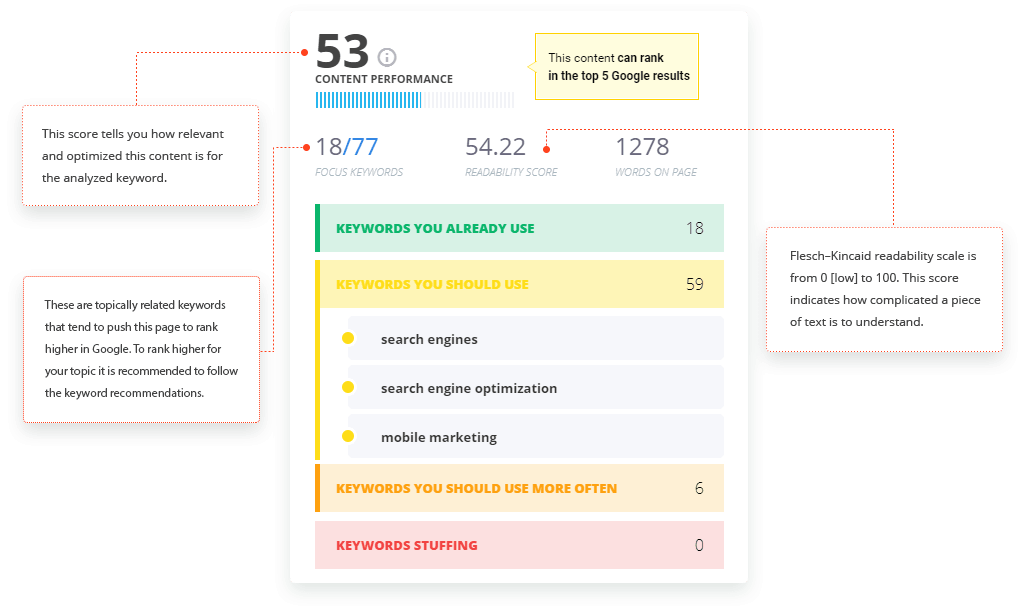
2. The Content Performance Score – The metric that shows you how well a page is optimized from a content point of view, on a scale from 0 to 100. The higher the score, the better optimized and relevant content it is.
The Content Performance metric is an indicator developed entirely by us, everything from soup to nuts. A lot of Google reverse engineering was involved in this, combining algorithms, ranking signals, content statistics, and concepts such as semantic search, LSI (Latent Semantic Indexing), TF*IDF or topical authority, just to mention a few.
After a keyword research, you get a content performance score for every piece of content you might be interested in, for any keyword or topic.
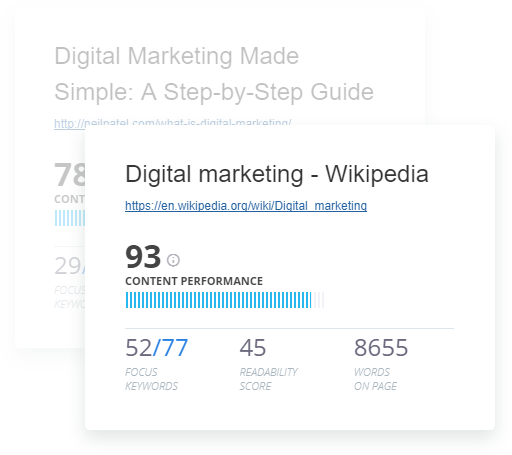
After we developed the Content Performance Score, we wanted to make sure that there is a connection between Content Performance and Rankings. And, without lingering for too long, we started a massive SERP research on 30,000 keywords trying to identify whether and how content performance influences Google’s top rankings.
The higher the score on content performance, the more likely a page is to be ranked higher up.
You can check out the full research here.
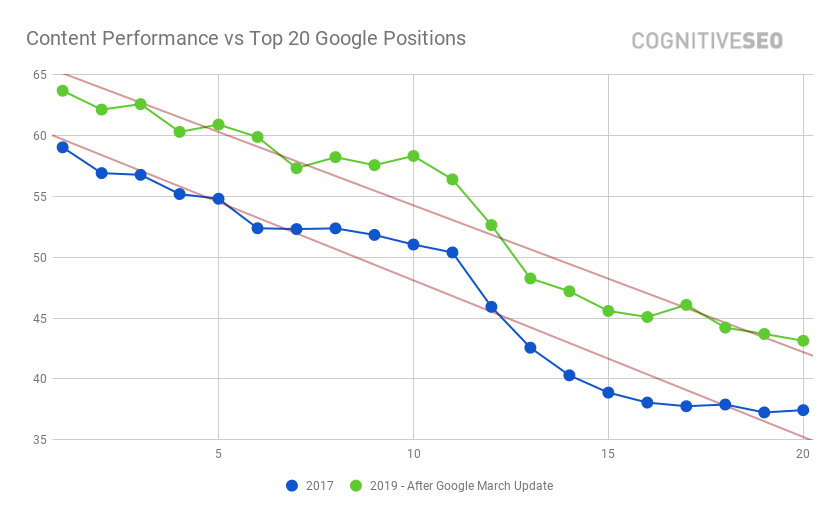
2. A More Suitable Name for the Improved Content Optimization Tool
When it came to our Keyword Tool & Content Assistant, I’m sure you’ve said it and heard it in different ways: the content optimization tool from cognitiveSEO, the content assistant tool or the keyword tool from cognitiveSEO. We don’t mind calling it in different ways; yet, we thought a lot about re-naming the tool so it will be more representative for its main functionality: content optimization.
cognitiveSEO’s Keyword Tool & Content Assistant now becomes the Content Optimizer & Keyword Tool.
The same search optimization tool, the same efficiency, now with a slightly different name.
We started with the name change as a prologue. Yet, for the advanced improvements and the brand new features, keep on reading.
3. New Metrics for a Better Understanding of Google Search Results
Being in the SEO business for a while, we know that digital marketers & SEO Pros need and love metrics. They like to compare sites and keywords to find the best cost-efficient solution, to create reports for clients, to perform in-depth researches and so on. And to perform all these activities they need metrics and numbers they can rely on. Their intuition when it comes to try ranking for a keyword for instance, needs to be backed-up by reliable metrics. And they couldn’t be more right. You cannot start an in-depth analysis without relying on a handful of strong metrics.
But what metrics should you actually look after?
Take baseball. Every team has the same definition of success: winning the World Series. This requires one main asset: a good team which is made out of good players. But what makes a player good? Baseball experts used to answer this question with a handful of simple metrics like batting average and runs batted in. Yet, statisticians came up with better, new metrics. They provided teams with the ability to slice their data in new ways, find better ways of defining good players, and thus win more games (I hope you all watched Moneyball).
While we know that all metrics are proxies for what ultimately matters, we know that some metrics are better than others.
You’re most likely familiar with the metric: keyword difficulty. It is a metric used to determine how difficult it is to rank for a keyword. Assessing keyword difficulty can help you determine whether or not it’s worth investing resources to rank on that specific keyword. While we know how important this metric is, we are also aware of the fact that sometimes, this metric alone might not be very practical. We don’t claim to have reinvented the SEO and digital marketing metrics; but what we changed is how we look at the data.
We made the keyword difficulty metric more granular by dividing it within two more straightforward and easier to understand metrics: the content difficulty and the link difficulty.
4. Content & Links Difficulty – Find Out What You Need to Rank to the Top
What does it take to rank #1 on Google? How many times did you hear that phrase and how many times did you answer with “it depends“?
What we tried to do is to eliminate that “depends” as much as possible and to give you the exact metrics you should follow when it comes to ranking to the very top.
In variable proportions, the two most important Google Ranking Factors are content and links. And this is how we came up with two metrics: Content & Links Difficulty.
4.1 What Is the Content Difficulty Score?
The Content Difficulty metric estimates how hard it will be to rank with well optimized content in the top 10 organic results for a given keyword in a given location.
The Content Difficulty is plotted on a scale from 0 to 100. The lower the Content Difficulty score, the easier it is to create content that ranks high. A lower Content Difficulty score means that there is less content competition on this keyword, and a higher chance to improve rankings using content.
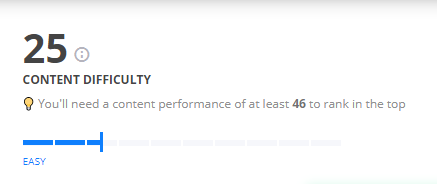
And if you are still wondering if content does influence rankings, here’s a quote from Google’s representative, John Mueller.
| “Without well-optimized content, even if you clean up your website, and you fix all of the issues, it still won’t rank high.” | |
| John Mueller | |
| Webmaster Trends Analyst at Google | |
Not only will the tool let you know how easy or difficult it is to rank on a specific keyword from a content point of view, but it will also let you know what content performance score you’d need to win top rankings for that keyword.
4.2 What Is the Link Difficulty Score?
Links Difficulty estimates how hard it will be to rank in the top 10 organic results for a given keyword in a given location, based on the number & strength of the backlinks that are currently linking to the top URLs ranking for this keyword.
The Links Difficulty is plotted on a scale from 0 to 100. The lower the Links Difficulty score, the easier it is to rank high with backlinks. A lower Links Difficulty score means that there is less competition on this keyword, and a higher chance to improve rankings by getting the recommended number of links.
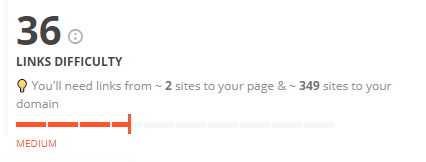
There is no doubt that the Link Difficulty score is super useful when analyzing the search engine ranking pages or when working on your link building campaign. You want to rank high on a specific keyword, but you need to know what it takes in terms of content and links. And the tool tells you exactly this. But what is even cooler is that the tool gives you the full list of links for any analyzed page.
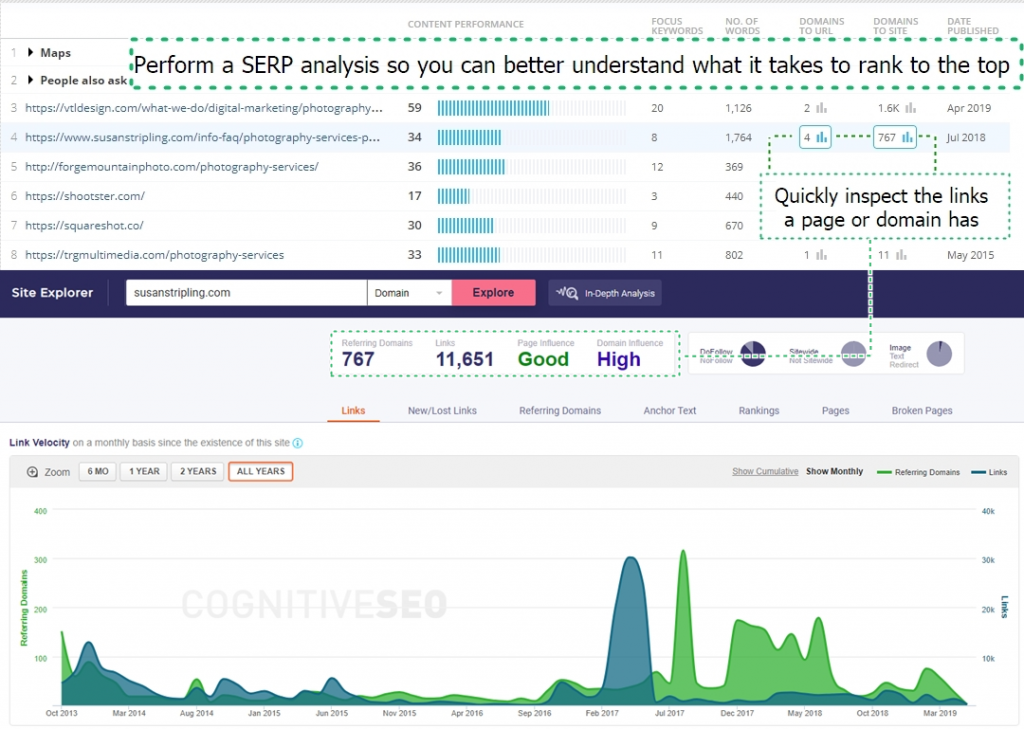
Simply click on the number of links for each page or each domain, and you’ll be redirected to the Site Explorer where you’ll get a quick and useful backlink analysis. If you want to check your internal links as well, check our onpage SEO tool.
5. Keyword Search Volume & Popularity Over Time – How to Find What the Searchers Are Looking For
The Content Optimizer already gave you info on the number of monthly searches for each analyzed keyword. What we’ve added extra now is the trend of the search query, the popularity of the analyzed keywords.
You’ll now get:
- The Monthly Search Volume – the total number of searches that are performed through Google, on a monthly basis;
- The Historical Search Trend – the popularity of a keyword in Google Search; It shows the relative interest and trending searches for any given keyword from as early as 2004.
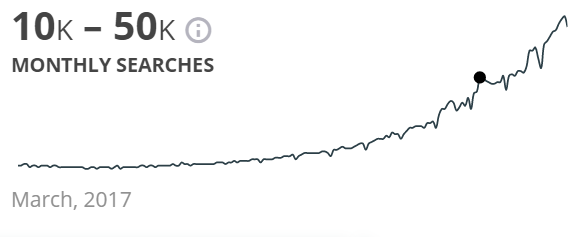
If by now you are still wondering why is this data important, please allow me to offer you an example.
As you can see in the screenshots below, there are two keywords analyzed: “digital marketing agency chicago” and “marketing agencies in chicago il”.
It happens (quite often unfortunately) for people to start optimizing for different keywords without making a trend or search analysis before. Indeed, in these two cases, the search volume is not very big, yet, consistent enough. Not to mention the trend. “digital marketing agency chicago” is not only searched more on Google within a month, but it also seems to have a growing popularity. On the other hand, “marketing agencies in chicago il” has a lower number of monthly searches but also a descending popularity trend. If you’re a marketing agency from Chicago, Illinois it would be good to rank well on both keywords; yet, it would be wiser to focus on the one with more searches and a growing trend popularity.


6. Content Assistant Gets Multiple Features
Leaving modesty aside, you need to know that the Content Assistant tool is one of a kind in the digital marketing field.
The Content Assistant is now even easier to use, it’s super smart and does most of the job for you.
What you already knew about the tool is that to optimize your content, you just copy-paste a piece of content, start writing a new one or import the content of a page from a URL and the tool tells you the exact keywords you should use in your content, highlights the ones you already use and lets you know if there are keywords that you should use more often. In the event of keyword stuffing, the tool will let you know what are the words you overused and which prevented your content from performing as it should.
Aside all that, allow us to highlight some of the main improvements:
- Get the exact questions people are asking on Google, related to your query – you can see what your readers and customers are interested in, and you can answer those questions in your content. This section is also very useful for identifying new content ideas you can write about.
- Better content editing features – whether you copy-paste a piece of text, you import a URL or start from scratch, it will be easier for you to edit the content within the tool.
- HTML toolbar included – you can edit and format your content just the way you want. You can view your content’s source and you can edit the code behind it directly or you insert pictures, videos, highlight, format or anything you need in terms of content editing.
- See the content performance score you should have to rank in top Google results – you will get a content performance score target based on the analysis of the pages that are ranking for the keyword you are optimizing for.
- Know your content reading time – you can now see how long it will take your readers to go through the article written by you.

7. Search Intent – Get to Know What the User Wants from the Very Beginning
Putting it simply, search intent is the why behind a search experience. In other words, why did the person make this search? What was the reason behind it? Do they want to find out something? Do they want to buy something? Do they want to navigate on a specific website?
Knowing the intent of the user is of paramount importance. If the keywords you want to rank for have clear and consistent intent behind them, you can tailor your content format and structure to be the best possible match for that intent.
Let’s say, for instance, that your search is related to sunglasses. Based on the exact words you use, the search engine might interpret your query as having different intents behind it:
- informational (if you search for “how to clean polarized sunglasses”);
- navigational (if you search for the name of a particular brand of sunglasses);
- transactional (if you search for “buy polarized sunglasses” or “sunglasses on sales”);
But sometimes, figuring out the intent of the user is not that easy. That’s why we fine-tuned our SEO content optimizer tool so you can see from the very beginning what is the search intent for the keyword you want to optimize for. This way, you’ll know exactly what type of content to create for it.
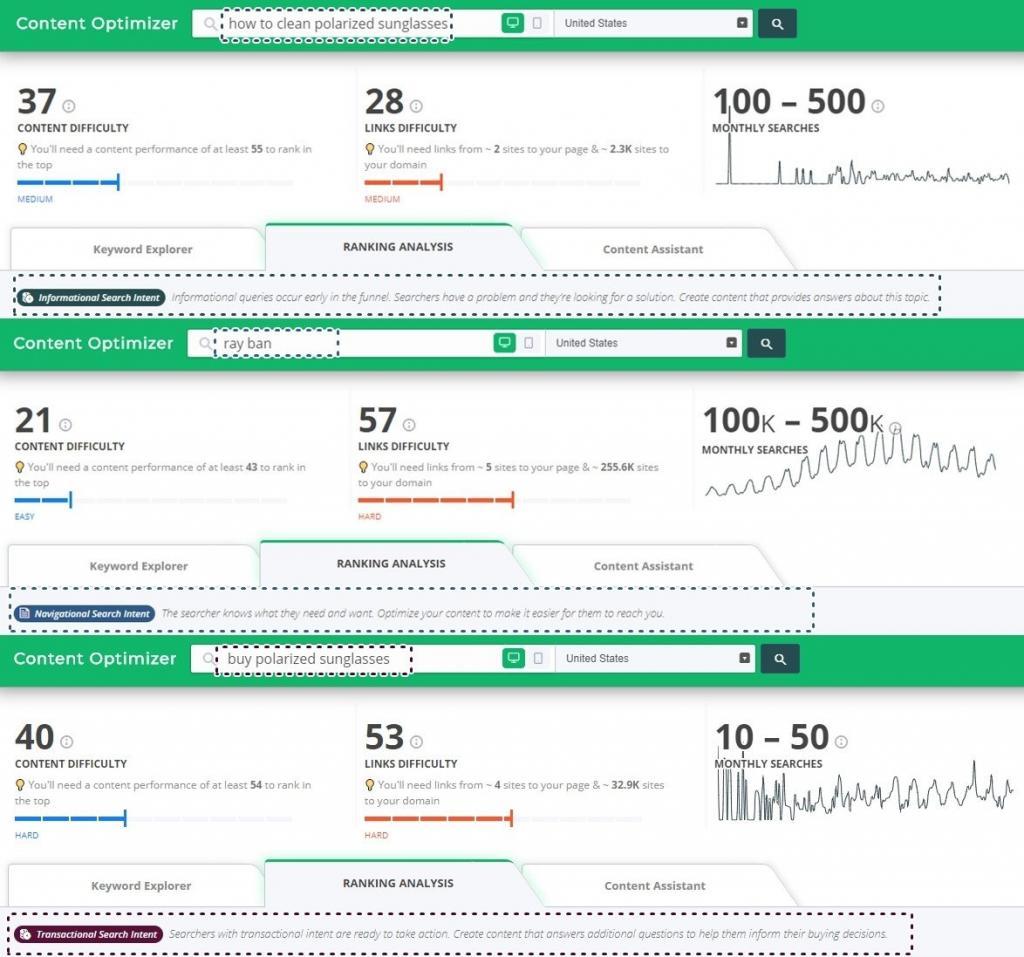
A search for “how to make tiramisu” will be classified by the tool as being “informational” from a search intent point of view. To rank on this keyword, it’s likely you’re going to need a “how to” type of SEO content or an user guide to draw attention and, given the context, a blog is probably the best type of page to host this content. On the other hand, with a search like “iphone 10 vs samsung galaxy 10”, you would fully expect for the first page of results to be filled with comparative review type pages from specialized review websites.
8. Mobile & Specific Local Analysis Are Now Available
An online presence is highly valuable for every business, no matter if you are located in a single place or have lots of offices around the globe. And search engine optimization should be applied both locally and globally.
Businesses that want to optimize for mobile and local SEO should have all the necessary tools and knowledge to fulfill their goal. Now more than ever, Google is focused on offering a personalized experience for each user, thus local optimization plays a crucial part in the play. Understanding this, we now offer you the possibility of creating the perfectly optimized piece of content at a mobile and local level. Choose the exact location you want to rank on, and see what it takes to rank be in top Google results.

9. Improved Overall Algorithm & Better User Experience
You already know it: today, publishing content is more important than ever. It is the one thing that is going to make the difference in a really hectic noisy market place.
But content marketing doesn’t happen overnight, especially with its continuous reinvention and advancement of technology. You need the right tools to keep up.
And although the monthly search volume for your query, keyword suggestions filtered by relevancy, number of words, etc. are important metrics for you to follow, they are not enough.
Do you know how the content of your website actually impacts your search engines’ rankings? Or do you know the exact key elements your content needs to have in order to rank in Google’s top results?
Wouldn’t it be great if there was a tool that would tell you the exact things your content is missing to rank in top 10 results?
Good news, we’ve invented that tool and we’ve also improved it: Content Assistant – the personalized content optimization tool that will give you the exact recommendation you should use so that your content will rank the highest.
What was a trendy and efficient technique a couple of months ago, now it might not work anymore as Google have changed their algorithm. This is why we know that in order to have a tool that brings real result we need to keep on improving it. The digital marketing evolves, but so does our tool.
We’ve updated the complex algorithms that make the Content Optimizer work efficiently .
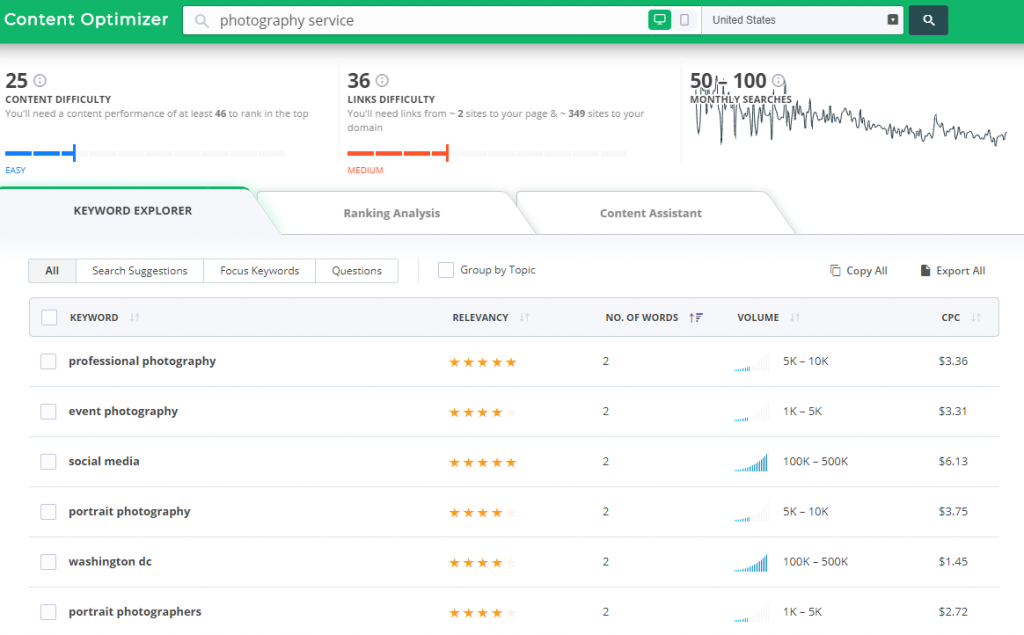
The content performance score is now even more accurate and the keywords suggestions offered by the tool are clutter-free.
Any algorithm has a false positive ratio. Yet, we try to keep that ratio at the lowest possible level. The improved version of the content assistant will offer you zero (or as close to zero as possible) unrelated keyword suggestions or keywords you should focus on. You will now be able to concentrate only on the keywords that will make your relevant content rank in top search result or even in Google’s answer box.
Keep in mind that the Content Optimizer is a learning machine, based on real-time search results. It is not just a database, but an instant Google SERP analyzer. If you’re looking for a third party opinion of the tool, here you can find a Content Optimizer from cognitiveSEO review. A lot of Google reverse engineering was involved in this, combining advanced algorithms and concepts such as semantic search, LSI (Latent Semantic Indexing), TF*IDF or topical authority, just to mention a few.
We hope you’ll enjoy the improvements just as much as we do. If you’re already using the tool, please let us know what you think about the new additions. If you’re new, take the tool for a spin and tell us how you like it.

 Site Explorer
Site Explorer Keyword tool
Keyword tool Google Algorithm Changes
Google Algorithm Changes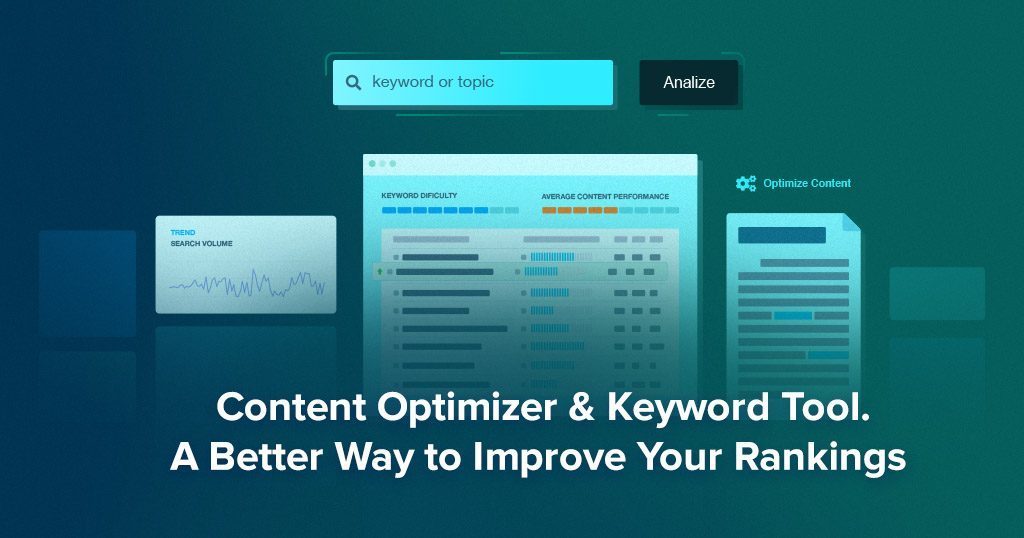




Great info. Let us hope that using this Content optimizer will boost our rankings.
Thanks Cornelia